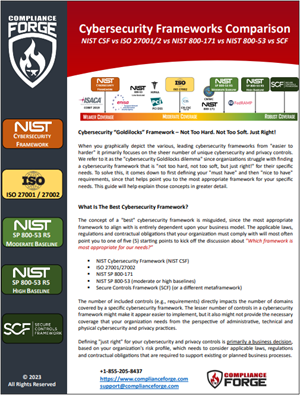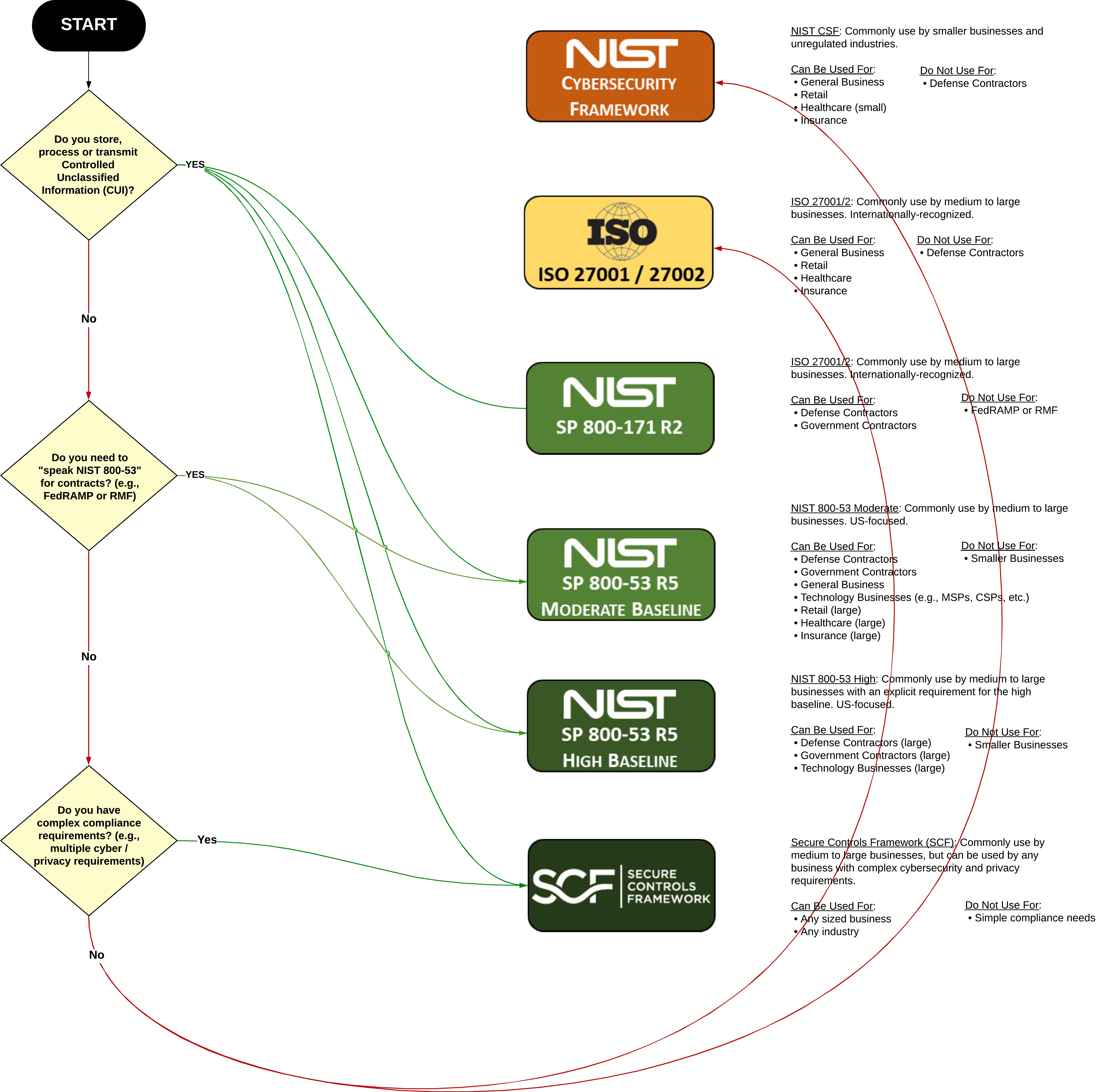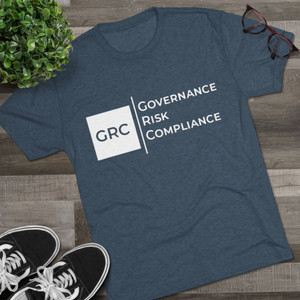Cybersecurity Frameworks Comparison
A common question is "What is the best cybersecurity framework for my organization?" There is no easy way to answer that, since determining the most appropriate cybersecurity framework for an organization is based on that organization's specific statutory, regulatory and contractual obligations, as well as its internal risk management practices.
Comparing The Leading Cybersecurity Frameworks
When you graphically depict the various, leading cybersecurity frameworks from "easier to harder" it primarily focuses on the sheer number of unique cybersecurity and privacy controls. The volume of these controls (e.g., requirements) directly impacts the number of domains covered by that cybersecurity framework. The lesser number of controls in a cybersecurity framework might make it appear easier to implement, but it also might not provide the necessary coverage that your organization needs from the perspective of administrative, technical and physical cybersecurity and privacy practices. Five (5) of the most common cybersecurity frameworks for an organization to align with are:
- NIST Cybersecurity Framework (NIST CSF);
- ISO 27001/27002;
- NIST SP 800-53 (moderate or high baselines);
- NIST 800-171; or
- Secure Controls Framework (SCF).
Defining "just right" for your cybersecurity and privacy controls is primarily a business decision, based on your organization's risk profile, which needs to consider applicable laws, regulations and contractual obligations that are required to support existing or planned business processes.
Cybersecurity Framework Comarison Guide
ComplianceForge created the following guide to help organizations understand and analyze the unique benefits and drawbacks associated with these leading cybersecurity frameworks:




